#lwjgl
Text
Was looking around the village but couldn’t see anyone around! 👀 Wondering what happened!? 🤔 And suddenly noticed everyone went to buy grain! Perhaps there is a famine on the way!! 😅
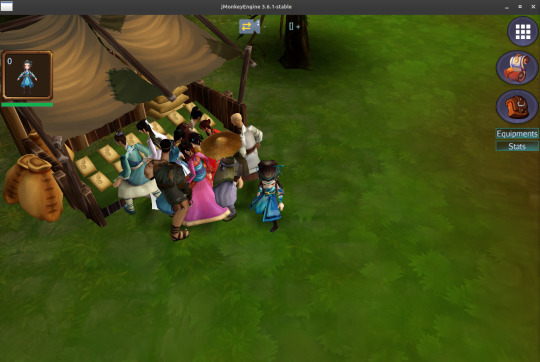
Taken to the logical conclusion: Seems my first NPC AI test sucks 🙈
#indiegamedev#indiegames#indiedev#screenshotsaturday#gamedevelopment#rpg#anime#gamedev#ai#gaming#computer games#lwjgl#opengl#java#programming
9 notes
·
View notes
Text
Demo from earlier this year when I was figuring out OpenGL texture rendering. Soggy Cat my beloved <3
2 notes
·
View notes
Text
Losing steam
On 4 September I launched a software project to create an asset loader for JMonkeyEngine based on the Open Asset Importer, aka Assimp.
I've now published 2 test versions of MonkeyWrench, my LWJGL-based library. Version 0.5.1 works okay, mostly, and in many cases it is clearly superior to the standard jme3-plugins loaders. However, I have doubts whether anyone will use MonkeyWrench, and my enthusiasm for the project is waning.
After 53 days of often-intense coding effort, I have a nice little open-source project: about 5300 lines of Java code at GitHub (not counting blanks and comments). I also learned a lot, of course. But I think my main accomplishment has been to document 17 issues in JMonkeyEngine, many of which have since been solved. (My project coincided with Hacktoberfest, which is perhaps why JME had more coding activity than usual.)
I also documented 5 issues in Assimp, though I'm not optimistic they'll ever be solved. That project has a huge backlog of open issues (currently 683) and doesn't seem very active.
My original plan called for investigating the Kotlin version of Assimp, but I see now that would be a separate project. Furthermore, the Kotlin project is even less active than Assimp itself: no commits since 2020. I'd probably wind up maintaining my own fork, which would defeat the purpose. Plus I've very little interest in learning Kotlin.
It's time to start winding down the project, making sure my code is clean and my documentation is adequate, and pursuing each residual issue to the best of my ability.
#open source#software development#3d model#github#software engineering#coding#jvm#library#game engine#3d assets#current wip#kotlin#java#monkey wrench#lwjgl#new release#backlog#winding down
2 notes
·
View notes
Text
yknow what fuck it
one of these days soon imma start a blog focusing on shitty old opengl renders
"webcore" this, "early internet" that, "y2k" whatever whatever
the absolute power that some hacked together 3rd project by a dev still figuring out lwjgl 2 or like glfw or glut or smth has more power than that tbh
like you cant tell me that innapropriately detailed textures without any lighting for a game that is probably just a proof of concept that a dev can like use c++ or java 1.4 is immaculate vibes
6 notes
·
View notes
Text
so this week i've been working on lightmaps, and I thought that they would be easy to implement since I just had to take the bytes from the BSP and use them in a texture but ohohoho no it was not
so the first thing that went wrong was me parsing the lightmap UVs the wrong way, thankfully a really good programmer who's experienced with BSP files helped me out with that. i also removed all lighting from the scene shader leaving only the fog
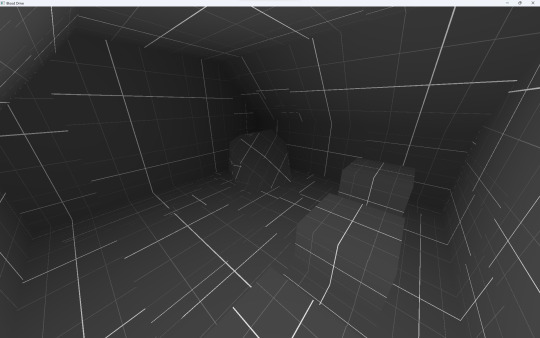
but i was having an awful time figuring out why lightmaps weren't loading, they only loaded if i binded the texture AFTER creating it instead of before, but that would only cause the last texture to be loaded to show up and also messed up Dear ImGui
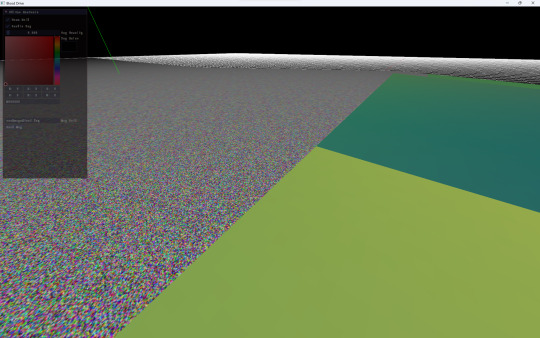
near the end of this week i was so sure that I had almost finished loading the lightmaps, but no matter what I did it didn't seem to change anything about the texture
but then i accurately converted the lightmap uvs and it turns out I was accidentally using the Dear ImGui font atlas as a texture
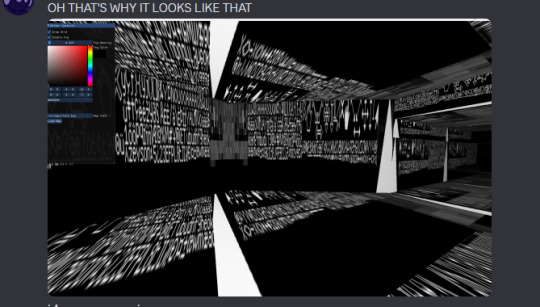
i still have no idea why this happened
but multiple hours of staring at my screen later I finally finished it and i was SO HAPPY
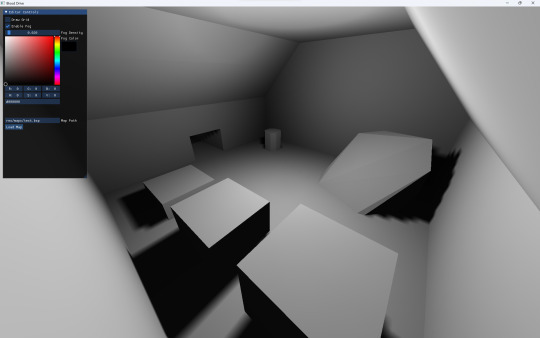
that's basically all i did this week, probably gonna turn these weekly devlogs into a regular thing unless i forget about it like every other thing i say i'm gonna do
1 note
·
View note
Text
Java lwjgl 3 tutorial

#Java lwjgl 3 tutorial how to#
#Java lwjgl 3 tutorial code#
#Java lwjgl 3 tutorial series#
#Java lwjgl 3 tutorial download#
: Contains bindings to stb, a set of single-file public domain libraries. : Contains bindings to LibOVR, the Oculus SDK library. Contains bindings to the OpenGL ES, a royalty-free, cross-platform API for full-function 2D and 3D graphics on embedded systems - including consoles, phones, appliances and vehicles. So lets get started with the Shader class. But before we do that, we should load the shaders and compile them, that is what we are going to look for now. In this tutorial, we are going to draw our first triangle onto the screen. In the previous tutorial, we have got some theory on the GLSL language, and we learnt some of the syntax. Welcome to the fifth part of the LWJGL Tutorial Series. Using OpenAL (by Jesse Maurais) 2D Space Invaders with LWJGL renderer (by Kevin Glass) 2D/3D Asteroids using LWJGL (includes game framework) (by Kevin Glass) 2D Scrolling Shoot'Em up - A Java Prototyp tribute. Here you will find documentation for LWJGL. The immediate drawing mode, as well as many other things, was deprecated in OpenGL 3.0, but many of the same principles still apply Documentation. In this tutorial I will use the immediate drawing mode.
#Java lwjgl 3 tutorial how to#
By the end of this tutorial you will have learned how to draw coloured primitive two-dimensional shapes: LWJGL OpenGL drawing. So I found your website, and now, I am trying to beg you to help me. I found LWJGL library, and I found your videos on youtube, in which you mention that if one would want to be coached to see the video description. This entry was posted in LWJGL Tutorials and tagged display, framebuffer, howto, java game development, He is only expecting 2D, but I don't want to do 2D. Updating will fix some input bugs where keys seem to. The Minecraft launcher automatically updates to the latest version of LWJGL. Essentially, it is what Minecraft uses for graphics, sound, and input.
#Java lwjgl 3 tutorial download#
1 What is LWJGL? 2 Why update? 3 Where to download 3.1 Notes 4 What to replace 4.1 All operating systems 4.2 Windows 4.3 Mac 4.4 GNU/Linux 5 Resources LWJGL is the LightWeight Java Game Library.These buffers are mainly used for short lived operations, or for data that is transferred to the GPU and does not need to be present in the process memory Instead, LWJGL 3 proposes two methods for buffer management: Auto-managed buffers, that is, buffers that are automatically collected by the Garbage Collector.I really doubt you'll find any LWJGL 3 tutorials because its still not had a 1.0 release yet, If you're new to LWJGL or Java I strongly recommend not using an untested library. I learned a lot from Oscar from TheCodingUniverce, here's his playlist.
#Java lwjgl 3 tutorial code#
A new tutorial for an old series!Source Code - channel.
Apparently, you guys like these tutorials, and not my others, so here it is.Source Code - channel.
Making a 2D game with LWJGL 3 and Java - YouTub
Twitter this video we take a look at how to create Flappy Bird from scratch in Java, using LWJGL 3 for OpenGL.
For porting existing LWJGL 2 code to LWJGL 3, see the migration guide For more code examples, see the LWJGL samples and the lwjgl3-demos repository (nightly build required).
LWJGL comes with rich documentation, you can browse the javadoc online starting here.For more information, FAQ, guides and tutorials visit the wiki.The Memory FAQ, Bindings FAQ and Troubleshooting pages are especially useful.
This comes at a cost: You now need to carefully specify the dependencies one by one. Now the base code is much more modular, and we can be more selective in the packages that we want to use instead of using a giant monolithic jar file.
LWJGL 3.1 introduced some changes in the way that the project is built.
For older hardware there will possibly be an OpenGL 2.1 version available In the course of the tutorial we will use OpenGL 3.2 Core Profile for creating a small game with shaders.
This tutorial is for anyone who wants to get started with the new version of the Lightweight Java Game Library.
Share your videos with friends, family, and the worl.
#Java lwjgl 3 tutorial series#
LWJGL 3 2D Video Tutorial Series « on: April 03, 2015, 11:54:49 » Hi Guys, In tandem with the textual tutorial series I've been working on I've also just started a video series if you guys are wanting to check it out! Here's the link to the tutorials: Setting up a Project to use LWJGL in Eclipse.
LWJGL 3 2D Video Tutorial Series 1 Replies 6476 Views emforce.
Project terbentuk dan buatlah class baru, misal dengan nama LWJGLMain (Klik Kanan -> New -> Java Class).Home Lwjgl 3 2d tutorial LWJGL 3 2D Video Tutorial Serie Untuk selain windows, folder native library yang dipakai menyesuaikan. Parameter tersebut untuk memberitahu Netbeans Letak Eksternal Native library yang dipakai oleh LWJGL, cek/eksplore pada folder tersebut untuk memastikan file dll ada.

0 notes
Text
Java lwjgl spotlights

#Java lwjgl spotlights install#
#Java lwjgl spotlights 64 bits#
Maven builds projects based on an XML file named pom.xml (Project Object Model) which manages project dependencies (the libraries you need to use) and the steps to be performed during the build process. Just open the folder that contains the chapter sample and IntelliJ will detect that it is a maven project. Maven is already integrated in most IDEs and you can directly open the different samples inside them. įor building our samples we will be using Maven. IntelliJ provides a free open source version, the Community version, which you can download from here.
#Java lwjgl spotlights 64 bits#
Since Java 10 is only available, by now, for 64 bits platforms, remeber to download the 64 bits version of IntelliJ. You can download IntelliJ IDEA which has good support for Java 10. You may use the Java IDE you want in order to run the samples. This book assumes that you have a moderate understanding of the Java language.
#Java lwjgl spotlights install#
Just choose the installer that suits your Operating System and install it. We will be using Java 10, so you need to download the Java SDK from Oracle’s pages. The benefit of doing it this way is that you will get a much better understanding of 3D graphics and also you can get better control.Īs said in the previous paragraphs we will be using Java for this book. By using this low level API you will have to go through many concepts and write lots of lines of code before you see the results. If your idea is to start creating 3D games in a short period of time maybe you should consider other alternatives like. LWJGL is a low level API that acts like a wrapper around OpenGL. The LWJGL library enables the access to low-level APIs (Application Programming Interface) such as OpenGL. We will develop our samples in Java and we will use the Lightweight Java Game Library ( LWJGL). In this book we will learn the principal techniques involved in developing 3D games.

0 notes
Text
How to outline an irregular polygon java lwjgl

#How to outline an irregular polygon java lwjgl for mac
#How to outline an irregular polygon java lwjgl install
#How to outline an irregular polygon java lwjgl 64 Bit
#How to outline an irregular polygon java lwjgl mod
#How to outline an irregular polygon java lwjgl update
The mods folder will be located on the drive you installed Minecraft on, in a folder you can find through clicking “users,” your Windows name, “App Data,” “Roaming,” and then “.minecraft.” If there’s no folder named “mods” in there, you can make one and just drop your downloaded mods in.
#How to outline an irregular polygon java lwjgl mod
Simply click “download” on the mod you want and move it into your mods folder. Java Edition mods can be found all over the place via websites like Curse Forge.
#How to outline an irregular polygon java lwjgl install
jar file that downloads to install Forge. A full list of Minecraaft Forge versions can be found here. After doing that, you’ll need to download the version of Minecraft Forge that matches your server version. Java Edition users of Minecraft will need Java installed. World packs, like Aquatic Life, will require making a new World for that add-on. Keep in mind that some add-ons, like texture packs, can be applied directly to your existing Worlds or Realms, but some that change the nature of the game a lot will require you to make a new Realm or World. There are add-ons that come free with a Realms Plus subscription, with all other packs costing real-world money (via Minecraft Coins), which can be bought in the store directly. Those playing on the Bedrock edition on consoles or through Windows can grab add-ons directly through the marketplace. Using add-ons in Minecraft Bedrock Edition Players on Java Edition will use mods that they can dig around for, mostly at no cost. Players on Bedrock Edition will primarily use add-ons, which can be purchased for real-world money in the marketplace. On Debian-like systems (Ubuntu, Mint, etc.Minecraft players can customize their games using a plethora of add-ons or mods, depending on which version they’re playing. minecraft/bin/natives/Īlternatively, a user may install the "liblwjgl-java" package and its dependencies via a package manager.
For this one, create a copy of openal.dylib, then rename it to libopenal.dylib.
You should replace these files in minecraft/bin/natives/ The current version of LWJGL (3.2 and higher) doesn't use the same natives set. minecraft folder's location varies by operating system. minecraft/bin/natives with the versions from the. In the lwjgl-X.Y.Z.zip, there should be two folders, named jar and natives.
This bug seems to be fixed when playing in fullscreen mode (Default F11), or updating to LWJGL 2.9.0.
#How to outline an irregular polygon java lwjgl update
Do not update to this version if this bothers you. That means that your building will be significantly slower. LWJGL 2.8.5 has a bug which sends a false signal that the user released all currently pressed keyboard keys when a mouse button is pressed.You can change the url in your browser to access 2.8.4 or 2.9.0 rather than 2.8.5. Version 2.8.5 generally breaks shift-clicking 2.8.4 and 2.9.0 do not.Keep a backup in case you need to rollback.
#How to outline an irregular polygon java lwjgl 64 Bit
Again on several 64 bit computers, the OpenAL64.dll update can cause a sound glitch that makes bursting sounds.
You can revert to the backup version you have saved if needed.
With 2.8.1, on most 64 bit computers, the lwjgl64.dll update will cause a black screen crash.
As a last resort, you can use the Minecraft Launcher's Force Update option to reset the files. minecraft folder before following the steps below. Select the latest stable release and download the lwjgl-X.Y.Z.zip. If you cannot play Minecraft on your Linux distribution, chances are that this is the problem. Trying to run Minecraft without updating LWJGL may create a black screen upon loading.
Some Linux distributions, such as openSUSE, require LWJGL to be updated before Minecraft can even run.
#How to outline an irregular polygon java lwjgl for mac
It has also been known to resolve the "cannot get JAWT interface" error for Mac users using Java 7.
It has been reported to fix intermittent crashes on Windows.
This can also potentially fix some issues regarding sound not working/cutting out.
Some users report a performance increase upon updating.
It also removes the "ghost" mouse pointer clicking.
Updating will fix some input bugs where keys seem to get stuck if you click at the same time.
The Minecraft launcher automatically updates to the latest version of LWJGL. Essentially, it is what Minecraft uses for graphics, sound, and input. LWJGL is the Light Weight Java Game Library.

0 notes
Text
Java lwjgl 2 rotate about axis

2011) $ See Also: Vector3D,īuild a rotation from the quaternion coordinates.īuild a rotation from three Cardan or Euler elementary rotations.īuild a rotation from an axis and an angle.īuild one of the rotations that transform one vector into another one.īuild the rotation that transforms a pair of vector into another pair.Īpply the inverse of the instance to another rotation.Īpply the inverse of the rotation to a vector.Ĭompute the distance between two rotations. Rotations are guaranteed to be immutable objects. For this purpose, theĬlass provides the methods: applyTo(Rotation) and With our previous notations, we would say we We can consider that in addition to vectors, a rotation can be applied to other Since a rotation is basically a vectorial operator, several rotations can beĬomposed together and the composite operation r = r 1 o Methods: applyTo(Vector3D) and applyInverseTo(Vector3D). Provide methods like projectVectorIntoDestinationFrame orĬomputeTransformedDirection. ThisĬlass does not push the user towards one specific definition and hence does not These examples show that a rotation is what the user wants it to be. Location and the Earth rotation, which would essentially be an application of the We will probably also need to transform the observing direction in the topocentricįrame into the observing direction in inertial frame taking into account the observatory In many case, both approaches will be combined. This implies in thisĬase the frame is fixed and the vector moves. Into the sighting direction in the same topocentric frame. In thisĬase the rotation transforms the direction at rest in a topocentric frame Would transform the sighting direction at rest into the desired observingĭirection when the telescope is pointed towards an object of interest. In thisĬase, the rotation implicitly defines the relation between the two frames.Īnother example could be a telescope control application, where the rotation The rotation transforms the coordinates of the vector in inertialįrame into the coordinates of the same vector in satellite frame. Meaning of these vectors may vary and the semantics of the rotation also.įor example in an spacecraft attitude simulation tool, users will oftenĬonsider the vectors are fixed (say the Earth direction for example) and theįrames change. Transforms three dimensional vectors into other threeĭimensional vectors. Internal representation, a rotation is an operator which basically Once it has been built, and regardless of its Matrix into a set of Cardan angles from can be done using theĭouble angles = new Rotation(matrix, 1.0e-10).getAngles(RotationOrder.XYZ) įocus is oriented on what a rotation do rather than on its This implies that this class can be used to convert from one In addition, a rotation can also be built implicitly Rotation instance (see the various constructors and User can build a rotation from any of these representations, andĪny of these representations can be retrieved from a Well, for theĬurious, we use quaternions for the internal representation. User-oriented and hiding this implementation details. This class presents an higher level abstraction, more Rotations can be represented by several different mathematicalĮntities (matrices, axe and angle, Cardan or Euler angles, This class implements rotations in a three-dimensional space. Public class Rotation extends Object implements Serializable SUMMARY: NESTED | FIELD | CONSTR | METHODĬlass Rotation .geometry.Rotation All Implemented Interfaces: Serializable

0 notes
Text
Stbimage image example java lwjgl

It is thus our job to tell OpenGL how it should sample its textures. Texture sampling has a loose interpretation and can be done in many different ways. The resulting texture coordinates would then look like this: We only have to pass 3 texture coordinates to the vertex shader, which then passes those to the fragment shader that neatly interpolates all the texture coordinates for each fragment. The top of the triangle should correspond with the top-center of the texture image so we take (0.5,1.0) as its texture coordinate. The same applies to the bottom-right side with a (1,0) texture coordinate. We want the bottom-left side of the triangle to correspond with the bottom-left side of the texture so we use the (0,0) texture coordinate for the triangle's bottom-left vertex. We specify 3 texture coordinate points for the triangle. The following image shows how we map texture coordinates to the triangle: Texture coordinates start at (0,0) for the lower left corner of a texture image to (1,1) for the upper right corner of a texture image. Retrieving the texture color using texture coordinates is called sampling. Texture coordinates range from 0 to 1 in the x and y axis (remember that we use 2D texture images). Fragment interpolation then does the rest for the other fragments. Each vertex should thus have a texture coordinate associated with them that specifies what part of the texture image to sample from. In order to map a texture to the triangle we need to tell each vertex of the triangle which part of the texture it corresponds to. Next to images, textures can also be used to store a large collection of arbitrary data to send to the shaders, but we'll leave that for a different topic.īelow you'll see a texture image of a brick wall mapped to the triangle from the previous chapter. Because we can insert a lot of detail in a single image, we can give the illusion the object is extremely detailed without having to specify extra vertices. A texture is a 2D image (even 1D and 3D textures exist) used to add detail to an object think of a texture as a piece of paper with a nice brick image (for example) on it neatly folded over your 3D house so it looks like your house has a stone exterior. What artists and programmers generally prefer is to use a texture. This takes up a considerable amount of extra overhead, since each model needs a lot more vertices and for each vertex a color attribute as well. However, to get a fair bit of realism we'd have to have many vertices so we could specify a lot of colors. We learned that to add more detail to our objects we can use colors for each vertex to create some interesting images.

0 notes
Text
More progress with farming stuff, here is how a 5x6 cultivated farmland looks in-game 🙂

For now, I am doing the underneath terrain painting of the land manually with a painting brush in the editor, but I am considering making this automatic like I have done for buildings and forest trees.
#indiegames#IndieGameDev#indiedev#gamedevelopment#videogames#pcgames#lwjgl#opengl#RPG#anime#farming#gaming#gamedevs#Androidgames#ScreenshotSunday#screenshot#screenshotsaturday
1 note
·
View note
Text
Java lwjgl how to resize vao
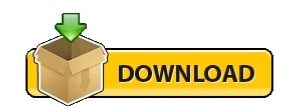
JAVA LWJGL HOW TO RESIZE VAO CODE
There are other resources though that cover this, take a look at this. There are various different methods depending on your target OpenGL version. If you perform frustum culling at any time, I would advise you to only check for chunks and not every single block, since it would probably be overkill and only result in a performance loss compaired to rendering a few blocks that might be outside of the view frustum but inside a chunk that touches the view frustum.Īlso it is really bad performance-wise to render every block with a seperate draw call. A possibility is that every surrounding block is checked if a specific block gets changed in any form (in Minecraft this is referred to as block updates). This shouldn't be done during every render call, you should only perform such checks if they are necessery. Those which are completely enclosed shouldn't be rendered as they are not visible anyways. You can check every block if it is exposed to air (=no other block) on any side or completely enclosed. Is there an amazingly helpful culling/optimization technique I should know about? I still haven't implemented frustum/occlusion culling. The FPS improved a little, but only by 1-2 FPS. It generated a 10x10 world and doesn't crash, but it runs at only 5 FPS, sometimes less. I found out that there was an infinite loop in the generation process, so I fixed that. It continued to lag and eventually crashed, so I tried to see if it was a problem with the terrain generation. I figured it was because I kept binding and unbinding the same VAO for every block, so I changed that because every block uses the same VAO.
JAVA LWJGL HOW TO RESIZE VAO CODE
In order to tidy up our code a little bit let’s create a new class called Mesh which, taking as an input an array of positions, creates the VBO and VAO objects needed to load that model into the graphics card. The resulting terrain is satisfyingly smooth and even, but the FPS decreases.Īt first I couldn't create a 10x10 world without crashing. In this chapter we will continue talking about how OpenGL renders things. After the smoothing algorithm finishes its task, there are about 1200 cubes. The terrain was initially too rough and uneven, so I created a smoothing algorithm and allowed for the generation of hills.īefore the smoothing algorithm does its job, there are about 900 (+/- 100) cubes. My world generation algorithm is similar to the Diamond-Square algorithm. If(G元0.glCheckFramebufferStatus(G元0.GL_FRAMEBUFFER) != G元0.I am working on a game with blocky graphics - similar to Minecraft. G元2.glFramebufferTexture(G元0.GL_FRAMEBUFFER, G元0.GL_COLOR_ATTACHMENT0, colID, 0) ĭrawBuffs = BufferUtils.createIntBuffer(1) ĭrawBuffs.put(0, G元0.GL_COLOR_ATTACHMENT0) G元0.glFramebufferRenderbuffer(G元0.GL_FRAMEBUFFER, G元0.GL_DEPTH_ATTACHMENT, G元0.GL_RENDERBUFFER, depID) G元0.glRenderbufferStorage(G元0.GL_RENDERBUFFER, GL11.GL_DEPTH_COMPONENT, scaleWidth, scaleHeight) G元0.glBindRenderbuffer(G元0.GL_RENDERBUFFER, depID) GL11.glTexParameteri(GL11.GL_TEXTURE_2D, GL11.GL_TEXTURE_WRAP_T, GL12.GL_CLAMP_TO_EDGE) GL11.glTexParameteri(GL11.GL_TEXTURE_2D, GL11.GL_TEXTURE_WRAP_S, GL12.GL_CLAMP_TO_EDGE) GL11.glTexParameteri(GL11.GL_TEXTURE_2D, GL11.GL_TEXTURE_MIN_FILTER, GL11.GL_NEAREST) GL11.glTexParameteri(GL11.GL_TEXTURE_2D, GL11.GL_TEXTURE_MAG_FILTER, GL11.GL_NEAREST) GL11.glTexImage2D(GL11.GL_TEXTURE_2D, 0, GL11.GL_RGB, scaleWidth, scaleHeight, 0, GL11.GL_RGB, GL11.GL_UNSIGNED_BYTE, (ByteBuffer)null) GL11.glBindTexture(GL11.GL_TEXTURE_2D, colID) G元0.glBindFramebuffer(G元0.GL_FRAMEBUFFER, fboID) This code is in the same method where I initialize OpenGL fboID = G元0.glGenFramebuffers() I have not been able to find any example code or how I would go about doing that. I have been trying to set the current render area to an FrameBuffer then draw the Frame Buffer larger on the window. The image below shows what I am trying to achieve. I am basically trying to take a small area (example 100x177) and draw it 9 times the original size while still keeping the nearest neighbor. I am going for a retro type of feel for my game and I believe that this would help with that. I am having a little issue with my game trying to get the screen to draw a ton larger.

0 notes
Text
I can fly
During the past few days, I've made plenty of progress on my Java graphics engine:
I found and fixed a texture-loading bug. Due to a logic error in a pair of nested loops, image pixels (stored in row-major order) were being loaded in column-major order. Previously, I'd worked around the bug by swapping texture coordinates during mesh generation. (e96d47a)
I ported an octasphere mesh generator from my Heart project. (8ca7adf) There are nine-and-sixty ways to generate spherical meshes; octaspheres are my favorite because they work well with textures. The work exposed wrinkles in my engine's support for procedural generation of meshes, which I ironed out.
I added an option to flip the Y-axis of images loaded for use in textures. (cb345a9) In the Y-up realm of 3-D graphics, the Y coordinate usually increases toward the top of an image, whereas in 2-D graphics Y usually increases toward the bottom of an image. This leads to endless confusion. From my experience with JMonkeyEngine, I know "flipY" is a valuable option to have!
The tutorial my engine is based upon provides a Z-up 3-D model and implements a Z-up camera. For compatibility with other projects, I want a Y-up camera. I developed a simple mechanism for rotating a 3-D mesh during the load process. My engine transitioned from Z-up to Y-up at 8f7e244.
I added a Camera class to convert eye location, view direction, field-of-view, and near/far clipping planes into coordinate-transform matrices.
I added a subsystem to manage user input, such as keyboard, mouse, and trackpad. Luckily this isn't my first LWJGL rodeo, so I didn't have to design the subsystem from scratch.
Bottom line: I can fly through the test scene using keyboard and mouse input.
#open source#software engineering#accomplishments#github#jvm#3d graphics#coding#java#software bugs#lwjgl#vulkan#3d render#conventions#pixels#yup#textures#debugging#software development#flying
6 notes
·
View notes
Text
Java lwjgl game tutorial

#Java lwjgl game tutorial how to
#Java lwjgl game tutorial series
I found this very very useful, and I suggest (in particular for novice) to take a look at this. Was written by (also present in this forum). Does anyone know of any good Light Weight Java Game Library tutorials geared towards beginners in OpenGL I have noticed there are some on youtube but they only cover the basics on creating a windo. First go to LWJGL Website and customize your LWJGL build. If you still haven’t configured LWJGL with your project, the process is very simple.
#Java lwjgl game tutorial how to
I also show you how to setup LWJGL with your project in this same tutorial.
#Java lwjgl game tutorial series
The architecture is very good, easy to understand and to take as example for implementations. The aim of this first tutorial in this series is to teach you how to create a window. I saw that was not so easy to find a complete tutorial covering all LWJGL usage, but I found one that I think it's one of the best that I found, because:ġ- Covers all usefult threads, from the basis to skeletal animation (that afaik It's a very hot topic but difficult to understand).ģ- Has a gitbook covering all topics and a maven project with all examples to download from git. However, LWJGL provides not just a graphics binding but a binding to OpenAL (an open. LWJGL is a low level API that acts like a. The LWJGL library enables the access to low-level APIs (Application Programming Interface) such as OpenGL. We will develop our samples in Java and we will use the Lightweight Java Game Library (LWJGL). This seems like a trivial point, especially when being illustrated by such a simplistic demo as this spaceinvaders game. In this book we will learn the principal techniques involved in developing 3D games. Most importantly its a game library, not just a binding to OpenGL. I'm developing with LWJGL since 4 months more or less (before I did some experiments with pure OpenGL). Java is a no brainer, its written and designed to work with Java. LWJGL ( is a Java library that enables cross-platform access to popular native APIs useful in the development of graphics (OpenGL/Vulkan), audio (OpenAL) and parallel computing (OpenCL) applications.

0 notes
Text
Detecting collision java lwjgl

#DETECTING COLLISION JAVA LWJGL MAC OS#
#DETECTING COLLISION JAVA LWJGL DRIVER#
#DETECTING COLLISION JAVA LWJGL ANDROID#
and their collision and mainly for the objects on top, below, and on the 4 sides, check to see if the next point forward is inside that box, if so, don't allow movement along that axis. Minecraft uses box collision boundaries only if you look.
#DETECTING COLLISION JAVA LWJGL ANDROID#
Precompiled binary can be found in 'bin' directory. jPCT is a texture mapping 3d engine/API for java and Android (OpenGL ES 1.0, 1.1 and 2.0) featuring gouraud shading, filtering, environment mapping, bump mapping, support for openGL via LWJGL. Re: Minecraft Style Terrain Collision Detection and Ramps. To replay file: Use VmaReplay - standalone command-line program. File is opened and written during whole lifetime of the allocator.
build-in primitives like cones, cubes, spheres. To record sequence of calls to a file: Fill in VmaAllocatorCreateInfo::pRecordSettings member while creating VmaAllocator object.
vertex lighting with an unlimited number of light sources.
The collision logic between the Ball and the two EdgeShapes works, but collision between the Ball and anything else in the Box2D world crashes the program.
skeletal animations via raft's Bones API The Box2D world uses two separate EdgeShapes as sensors for incrementing a score variable upon collision with the Ball (view attached image).
#DETECTING COLLISION JAVA LWJGL DRIVER#
Unable to detect the driver version, driver revision name. keyframe animations (taken from a MD2-file or self defined) Display.createWindow(Display.java:306) at .create(Display.java:848).support for octrees and portal rendering About Press Copyright Contact us Creators Advertise Developers Terms Privacy Policy & Safety How YouTube works Test new features Press Copyright Contact us Creators.All you need to do is keep track of all the corners of the boxes. I wrote sat collision detection system for my game engine just in 1 hour. Those boxes can be rotated to any direction so it can easily beat any AABB system. You can rate examples to help us improve the. You can easily check collision between two boxes. These are the top rated real world Java examples of extracted from open source projects. There is no need for an extra library for collision detection or a seperate GUI package to replace Swing/AWT. I recommend Separating Axis Theorem (SAT).
#DETECTING COLLISION JAVA LWJGL MAC OS#
JPCT with its easy to learn API offers you all the features you need to write a cool looking 3D game, simulation or business application in Java for the desktop (Windows, Linux, Mac OS X, Solaris x86.

0 notes
Text
Java lwjgl 2d

#JAVA LWJGL 2D CODE#
And what is a Vertex Buffer? A Vertex Buffer is another data structure that packs all the vertices that need to be rendered, by using vertex arrays, and makes that information available to the shaders in the graphics pipeline. And how do you describe a point in a 3D space? By specifying its x, y and z coordinates. But, what is a vertex? A vertex is a data structure that describes a point in 2D or 3D space. The rendering starts taking as its input a list of vertices in the form of Vertex Buffers. The following picture depicts a simplified version of the OpenGL programmable pipeline: In this model, the different steps that compose the graphics pipeline can be controlled or programmed by using a set of specific programs called shaders. OpenGL 2.0 introduced the concept of programmable pipeline. The graphics pipeline was composed of these steps: Thus, the effects and operations that could be applied were limited by the API itself (for instance, “set fog” or “add light”, but the implementation of those functions were fixed and could not be changed). The programmer was constrained to the set of functions available for each step. This model employed a set of steps in the rendering process which defined a fixed set of operations. First versions of OpenGL employed a model which was called fixed-function pipeline. The sequence of steps that ends up drawing a 3D representation into your 2D screen is called the graphics pipeline.
#JAVA LWJGL 2D CODE#
Modern OpenGL lets you think in one problem at a time and it lets you organize your code and processes in a more logical way. It is actually simpler and much more flexible. Let me give you an advice for those of you that think that way. You may end up thinking that drawing a simple shape to the screen should not require so many concepts and lines of code. If you are used to older versions of OpenGL, that is fixed-function pipeline, you may end this chapter wondering why it needs to be so complex. In this chapter we will learn the processes that takes place while rendering a scene using OpenGL.

1 note
·
View note